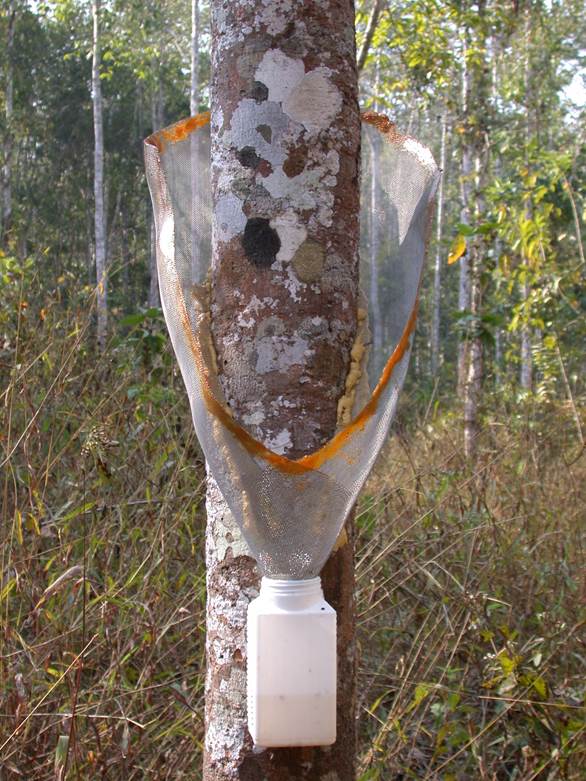Previous studies showed that the species richness of vertebrates and arthropods has significantly decreased in rubber plantations compared to natural forests in Xishuangbanna. Shifts in plant composition caused by land-use changes may directly and/or indirectly affect spider assemblages. However, changes in spiders associated with tree trunks following land-use changes have not yet been examined in tropical regions.
Prof. YANG Xiaodong of Xishuangbanna Tropical Botanical Garden (XTBG) and his cooperators conducted a study to determine how tropical forest management influences bark-dwelling spider composition. They compared bark-dwelling spider assemblages among four different land-use types in the Xishuangbanna region, which included tropical seasonal rainforests (TSRF), Aporosa yunnanensis (Euphorbiaceae) plantations (AYP), rubber and tea mixtures (RTM), and rubber plantations (RP).
The researchers aimed to see how spatial-seasonal distributions of bark-dwelling spider assemblages differed among the four land-use types. They also wanted to see whether vegetation complexity and diversity of herbs and shrubs (tea bushes) in plantations increased spider diversity.
They found that spider species composition differed between TSRF and forest plantations. Canopy cover in both seasons and grass cover and shrub cover in the dry season well explained species assemblages. Spider diversity between TSRF and forest plantations differed more distinctly in the rainy season. AYP had an intermediate level of disturbance, which was associated with highest species richness, whereas TSRF had the highest beta diversity. The mean number of individuals was the highest in RP, but species richness and beta diversity were the lowest.
The results suggested that forest management impacts bark-dwelling spider assemblages by altering vegetation structure of forest plantations in Xishuangbanna. Retaining understory vegetation such as shrubs and herbs in forest plantations may aid in conserving bark-dwelling spiders in this region.
The study entitled “Diversity and assemblage structure of bark-dwelling spiders in tropical rainforest and plantations under different management intensities in Xishuangbanna, China” has been published in Insect Conservation and Diversity.
Contact
YANG Xiaodong Principal Investigator
Key Laboratory of Tropical Forest Ecology, Xishuangbanna Tropical Botanical Garden, Chinese Academy of Sciences, Mengla, Yunnan 666303, China
Tel: 86-691-8713236
E-mail: yangxd@xtbg.ac.cn

Spiders were collected using trunk traps (Image by YANG Xiaodong)

